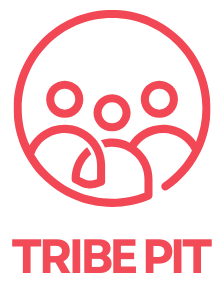Patagonia, a global leader in outdoor apparel, has set itself apart by embracing a mission that transcends profit-making. The brand’s commitment to environmental activism has become the cornerstone of its identity, inspiring a loyal tribe of like-minded individuals who share its values. By leveraging tribal marketing, Patagonia has created a vibrant community centered on environmental stewardship, sustainability, and advocacy.
What Is Tribal Marketing?
Tribal marketing is about building a community of individuals united by shared beliefs, passions, and values. For Patagonia, this means fostering a tribe of environmentally-conscious customers who not only buy its products but also join its mission to protect the planet. This deep emotional connection has turned Patagonia’s customers into advocates who actively support and promote the brand’s initiatives.
Patagonia’s Tribal Marketing Strategies
Patagonia’s approach to tribal marketing is rooted in authenticity and purpose. Here are the key strategies it uses to build and sustain its community:
1. Living Its Mission
Patagonia’s mission statement, “We’re in business to save our home planet,” is more than just a tagline. It guides every aspect of the company’s operations, from product design to marketing campaigns.
- Sustainable Practices: Patagonia prioritizes environmentally-friendly materials, ethical manufacturing, and transparency in its supply chain.
- Activism First: The brand often takes bold stances on environmental issues, such as pledging 1% of sales to environmental causes through its “1% for the Planet” initiative.
2. Empowering Its Community
Patagonia actively engages its tribe by empowering them to take action on environmental issues.
- Tools for Activism: The brand provides resources like its “Action Works” platform, connecting customers with grassroots environmental organizations.
- Events and Campaigns: Patagonia organizes events like clean-up drives, workshops, and activism training to inspire community participation.
3. Creating Authentic Content
Patagonia’s marketing is less about selling products and more about telling stories that resonate with its audience.
- Documentaries and Films: Through initiatives like Patagonia Films, the brand produces documentaries that highlight environmental challenges and solutions.
- User-Generated Stories: Patagonia often shares stories from its customers, showcasing their adventures and activism.
4. Encouraging Repair and Recycling
Patagonia’s “Worn Wear” program promotes repairing and recycling gear instead of buying new items. This initiative aligns with its values and reinforces the tribe’s commitment to sustainability.
- Repair Clinics: Patagonia hosts events where customers can learn how to repair their gear.
- Secondhand Market: The Worn Wear platform allows customers to buy and sell used Patagonia products, extending the lifecycle of its gear.
5. Advocating for Systemic Change
Patagonia doesn’t shy away from political advocacy, often lobbying for environmental policies and encouraging its tribe to do the same.
- Political Action: The brand has sued the U.S. government over environmental policies and supports initiatives like voter registration drives.
- Corporate Leadership: Patagonia’s commitment to being a B Corp and a leader in sustainable business practices inspires other companies to follow suit.
The Impact of Patagonia’s Tribal Marketing
Patagonia’s tribal marketing strategies have yielded impressive results:
- Loyal Customer Base: Patagonia’s tribe is deeply loyal, often choosing the brand over competitors because of its shared values.
- Word-of-Mouth Advocacy: The community’s passion for the brand’s mission leads to organic promotion and increased brand visibility.
- Increased Revenue: Despite its anti-consumerist messaging, Patagonia has seen consistent growth, proving that purpose-driven marketing can be profitable.
- Cultural Influence: Patagonia has become a symbol of environmental activism, influencing both consumers and other businesses to prioritize sustainability.
Lessons for Other Brands
Patagonia’s success offers valuable insights for brands looking to build a purpose-driven community:
- Define Your Purpose: Clearly articulate your mission and ensure it aligns with your audience’s values.
- Engage Authentically: Build trust by staying true to your mission and involving your community in meaningful ways.
- Empower Your Tribe: Provide tools, resources, and opportunities for your community to take action.
- Create Value Beyond Products: Focus on delivering value through experiences, education, and advocacy.
- Take a Stand: Don’t be afraid to take bold stances on issues that matter to your tribe.
Patagonia’s tribal marketing approach demonstrates the power of aligning business goals with a greater purpose. By fostering a passionate community around environmental activism, Patagonia has built a brand that transcends products and inspires real change. For businesses seeking to connect with their audience on a deeper level, Patagonia’s strategies offer a blueprint for success.



